
Nestled behind Japan’s longest shopping arcade, ‘Tenjinbashisuji’, Ura Tenma is renowned among locals as “a place where you can get delicious food and enjoy good drinks at reasonable prices,” according to Tatsuya Inaoka, a Tenma native and Osaka local.
In the heart of Ura Tenma, after the infamous bustle of the Japanese workday, you’ll find a vibrant gathering of men and women, unwinding with coworkers or friends. Weekends offer no exception, as this custom, known as ‘飲み会’ (nomikai), unfolds. Nomikai has become a cornerstone of post-work socializing, creating an atmosphere of release and connection.
Amidst the lively scene, the standing bars along the Osaka Loop line, like those in Ura Tenma, play a pivotal role. These establishments offer a unique setting for nomikai, where the ambiance is unpretentious, and patrons can savor drinks while standing, fostering a sense of informality and shared experience.
Table of Contents
Tachinomi-dokoro Shintamon Sakakura 立呑処 新多聞酒蔵
Standing bar, Asian, Ethnic, Oden
4-12 Tenjinbashi, Kita-ku, Osaka, Osaka 530-0041
58m from JR Loop Line Tenma Station
Inside is an L counter with standing room for 20 people
Enter the standing bar ‘Shintamon Sakakura’, a standout establishment founded in 2017, breathing new life into the enduring Japanese tradition of standing bars. Beyond being a testament to the historical roots of standing bars, ‘Shintamon Sakakura’ introduces a multicultural twist, proudly representing itself as a Malaysian standing bar following its takeover of the pre-existing Japanese standing bar ‘Tamon Sakakura’ that had been in operation for over 30 years.
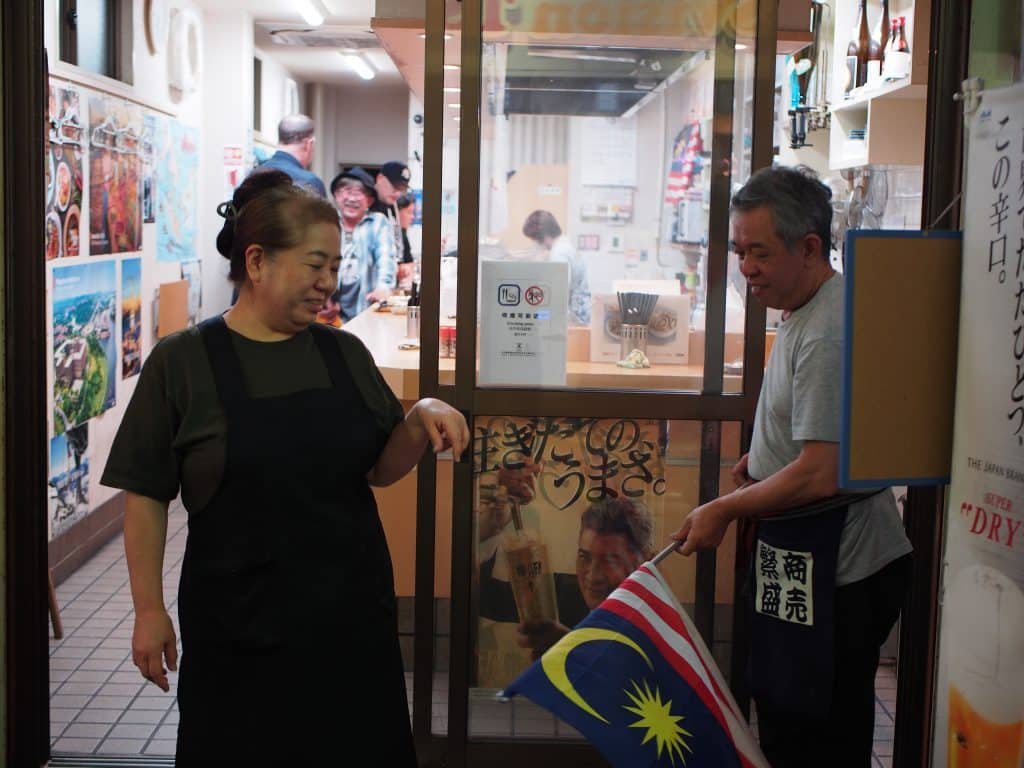
A Japan Times article delves into the extensive history of standing bars in Japan, tracing it back to the Edo Period. “Across Japan, discreetly nestled in quiet alleyways or claiming the corners of bustling intersections, you’ll discover tachinomiya. Often translated as ‘standing bars,’ these establishments manifest in two distinct forms: licensed restaurants and small, privately owned liquor shops known as sakeya no tachinomi.”
The fusion of Malaysian flavors with the timeless Japanese tradition creates an enriching experience for visitors, offering a fresh perspective while paying homage to the legacy of standing bars. ‘Shintamon Sakakura’ stands out as a vibrant reflection of the evolution of this tradition, attracting patrons seeking both the nostalgia of the old and the vibrancy of Malaysian cuisine.
Shintamon Sakakura’ is run by a wonderful international couple—Fang Hing Yi, affectionately referred to as Han-chan, and Nami Maeyama. Han-chan is from Malaysia, a nation known for its diverse population of Malays, Chinese, and Indians. As a result, the menu incorporates a variety of flavors representative of each ethnic group.
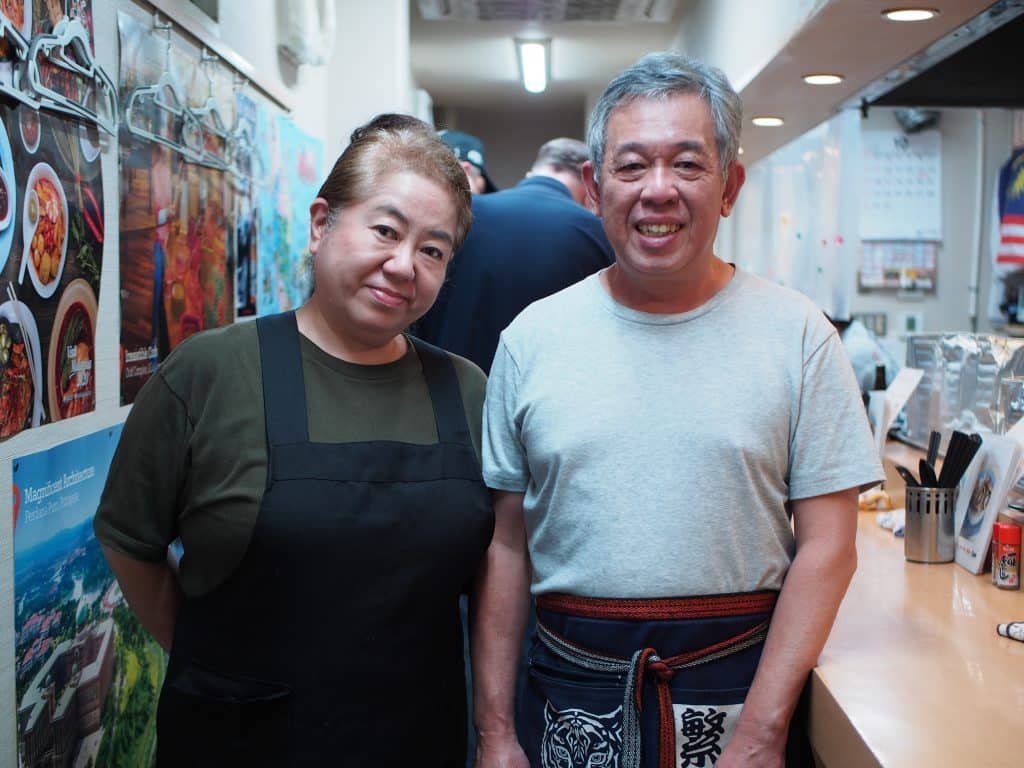
Their menu consists of three main components: ‘Han-chan’s Cooking,’ featuring ethnic dishes prepared by Han-chan, ‘Grandma’s Taste,’ showcasing dishes created by the Nami and her mother, and the older menu showcasing more traditional Japanese fare like sashimi and other small Japanese dishes that pair well with alcohol.
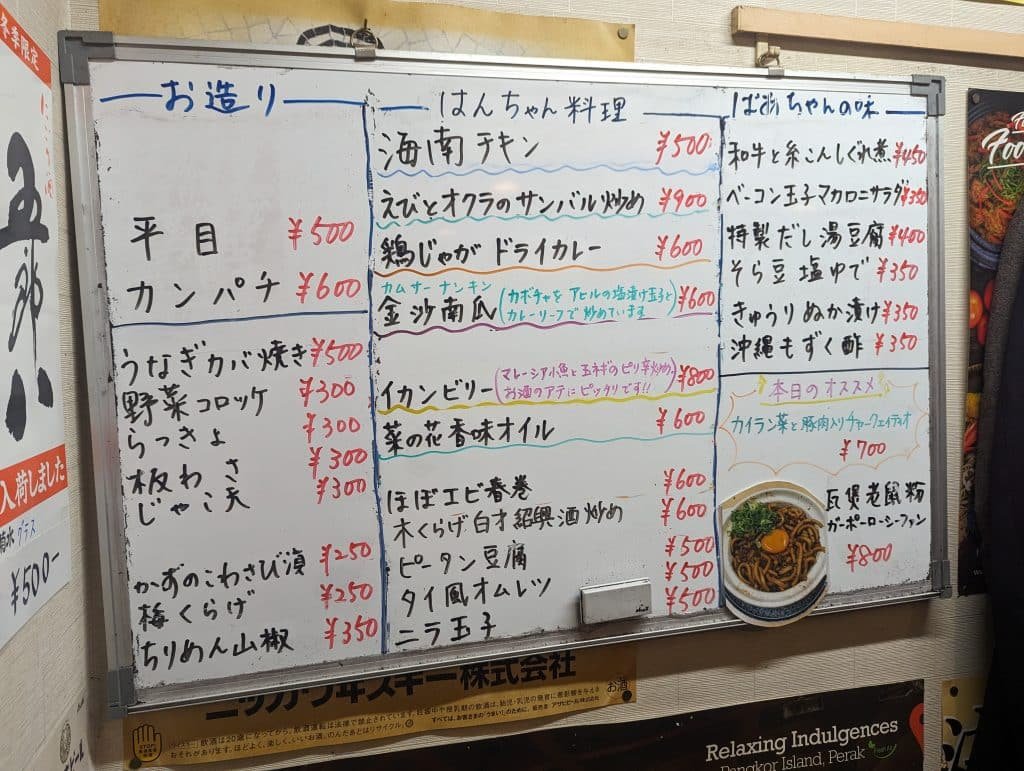
Nami’s English is quite proficient, and if you find yourself a bit uneasy in a Japanese-only environment, you can rely on her for a little help with the menu but speaking Japanese is, of course, the best way to conduct business when in Japan.
Only since coming to Japan have I started to explore Malaysian cuisine, and based on my limited experience, my understanding is quite elementary. That’s why I relied on my Malaysian acquaintance, Steven Ng, to guide the way with the orders.
Steven, a long-term resident of Osaka, shared insights into Malaysia’s rich mix of culture: “Malaysia has so many ethnicities—Malay, Chinese, Indian, Hokkien, Baba, Nyonye, influenced by the Portuguese, and with proximity to Thailand. As a result, every state boasts a unique cuisine. Baba, a blend of Malay and Chinese, produces halal Chinese Malay food.”
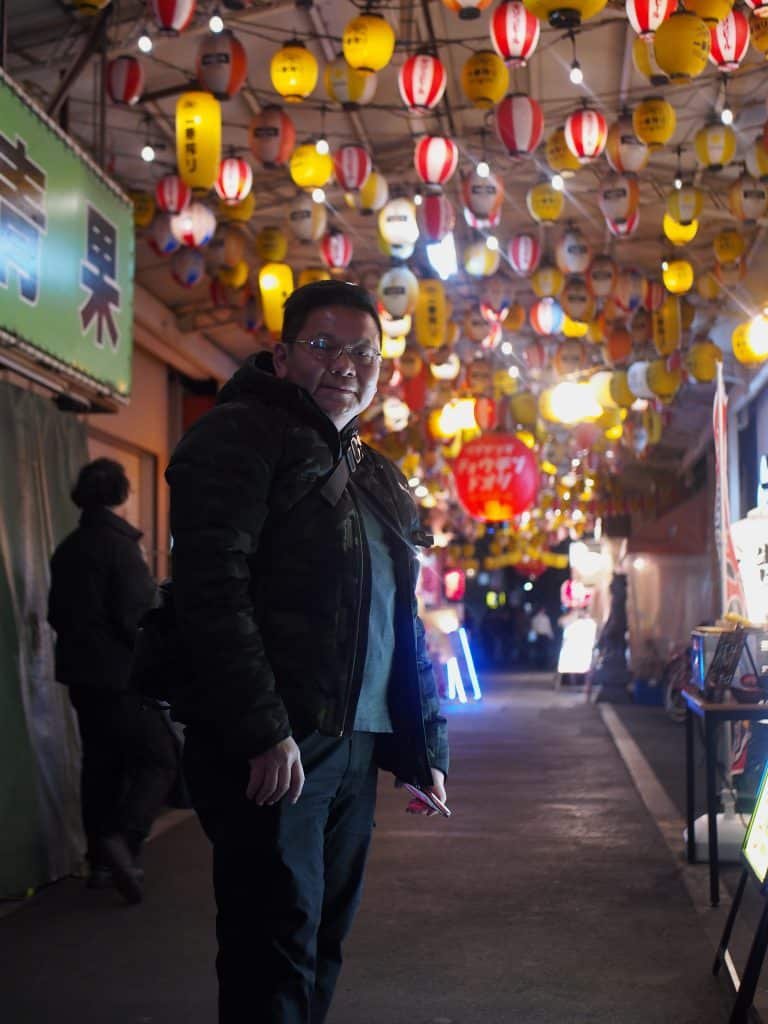
So, if you’re unsure where to start, just go with what Han-chan recommends—like Steven did.
Ultimately, almost everything we ordered was found on the board mounted on the wall behind us while standing at the L-shaped counter; most of which fell under the section titled ‘Han-chan’s Cooking.’
Kamusanankin
金沙南瓜—カムサナンキン
アヒルの卵の塩漬けとかぼちゃの炒め物
600 yen
Steven started with a dish called ‘kamusanankin’, pumpkin fried with salted pickled duck egg and curry leaves (金沙南瓜 カムサナンキン). If you examine the Kanji of this dish, it contains the characters for gold, sand, and pumpkin. Steven commented that he likes the dish because it has a perfect combination of sweetness from the pumpkin and saltiness from the egg.
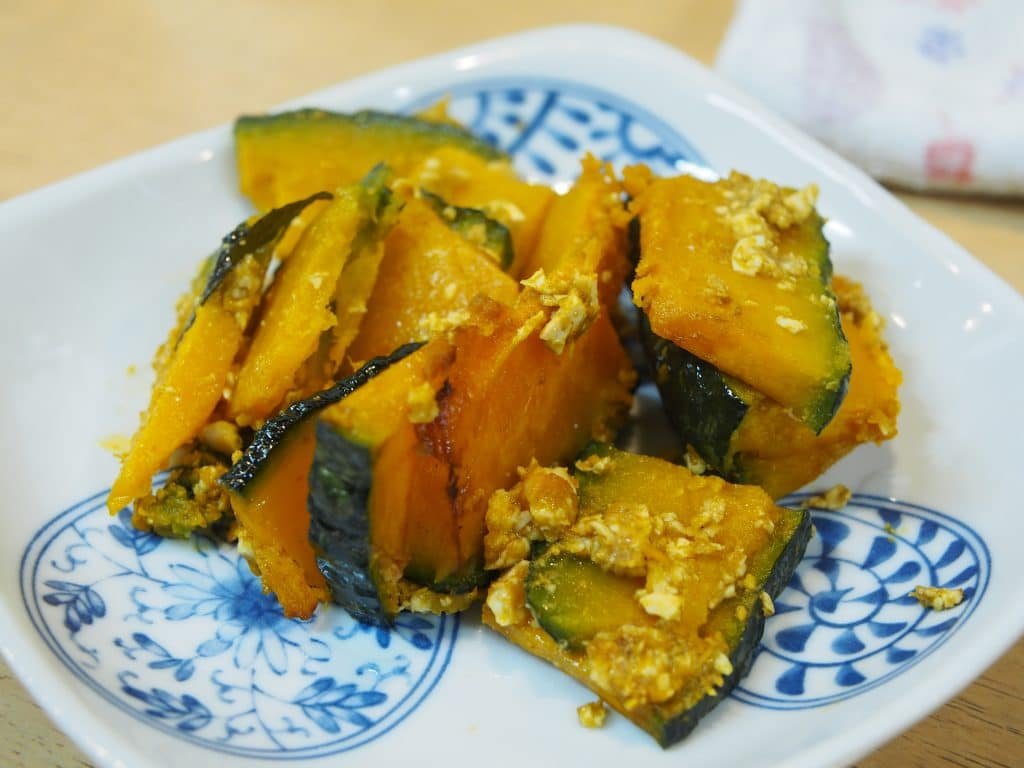
Kwetiau with Kailan and Beef Stir-fry
カイラン菜と牛肉入りクエイティアオ炒め
700 yen
‘Kwetiau’ is Indonesian for flat noodles, and ‘kailan’ refers to Chinese broccoli or kale. Many Americans might be familiar with the combination of beef and broccoli, as broccoli is often used as a substitute for ‘kailan’ in Chinese-American cooking. Steven notes that this dish is quite typical in Malaysia, while Nami adds that it is only available when ‘kailan’ is in season.
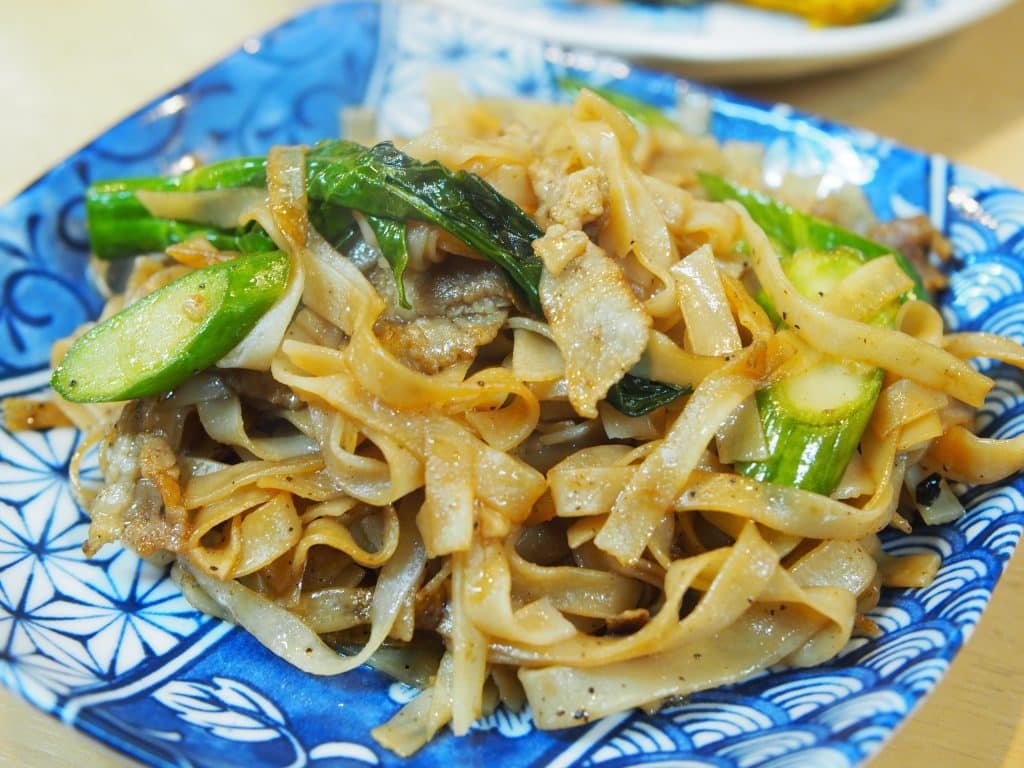
Chicken and Potatoes Simmered with Curry Leaf
鶏肉とじゃがいものカレーリーフ煮
600 yen
Curry leaves are a crucial flavor in Malaysian cuisine, known for their unique citrusy and nutty taste. In a classic Malaysian chicken and potato curry, these leaves add a special aromatic touch, as shared by Steven. Originally introduced by Indian immigrants, curry leaves enhance the overall flavor, making the dish rich and distinctive. Just a little preparation—tempering them in oil—unlocks their unique flavor. So, when you savor a Malaysian curry, it’s the curry leaves that bring that extra depth and a hint of citrus to your plate.
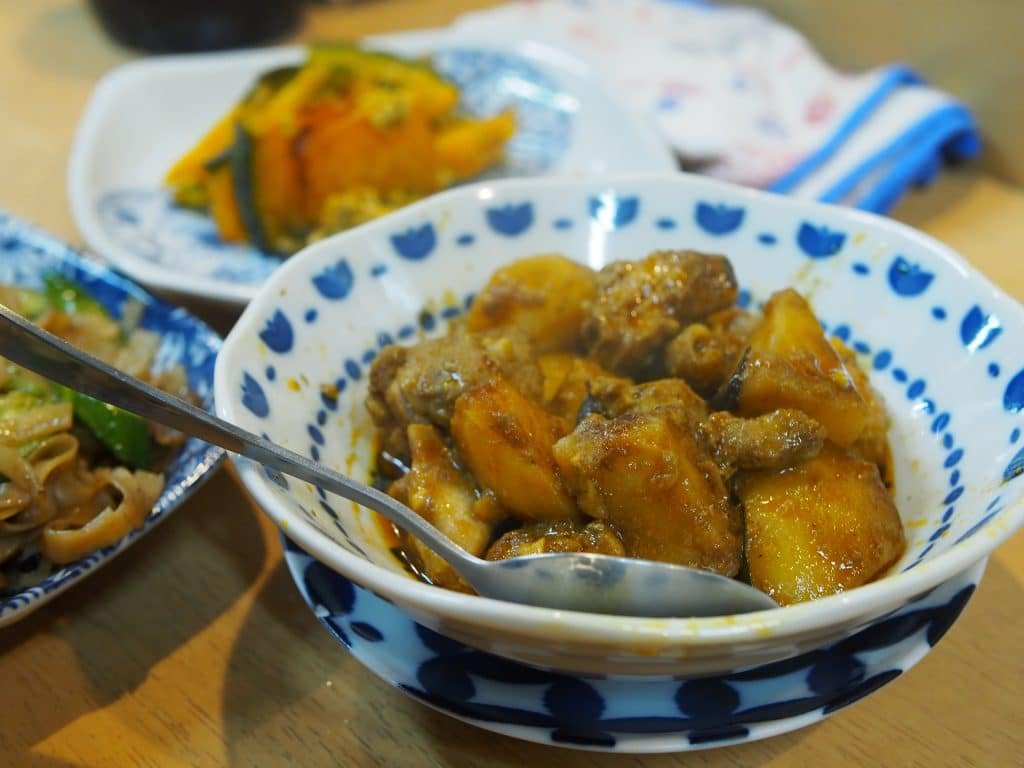
Prawn and Okra Sambal Stir-Fry
エビとオクラのサンバル炒め
900 yen
Steven noted, “Sambal is always so good.” To fully grasp this dish, it’s essential to recognize the significance of sambal in Malaysian cooking. Sambal, a vital element of Malaysian cuisine, is a spicy chili paste that imparts heat, sweetness, and savory flavors to various dishes. Whether used as a dip or in cooking, sambal enhances the overall taste, introducing complexity that mirrors Malaysia’s diverse culinary influences. Its adaptability, cultural roots, and spiciness render sambal a fundamental component, underscoring Malaysia’s inclination for bold and flavorful food.
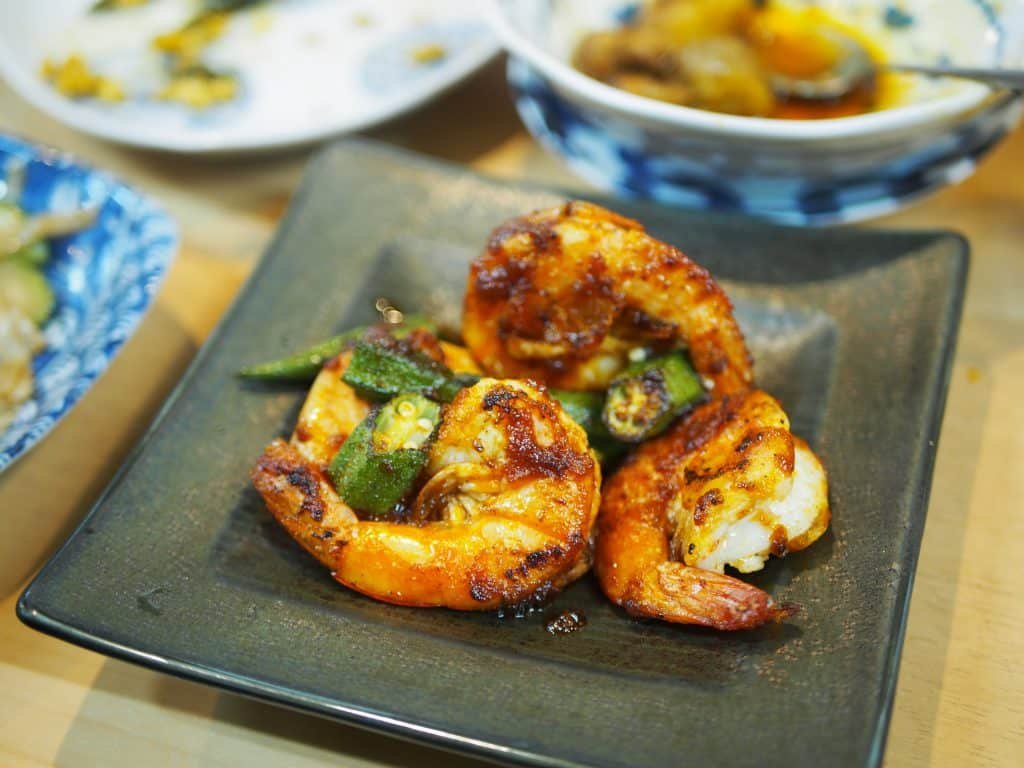
Singapore Beehoon
シンガポール焼きビーフン
700 yen
Steven has a fondness for Singapore Beehoon, particularly when prepared by Han-chan, who skillfully incorporates ‘wok hei’ into the dish. Enjoying this meal feels like savoring a culinary masterpiece, where the wok becomes an extension of Han-chan’s skill, lending the Beehoon a distinct smokiness and depth. The artistry of ‘wok hei’ is evident in the captivating flips and turns, a craft usually mastered by seasoned chefs. The complexity of ‘wok hei’ is best understood through this video by the South China Morning Post.
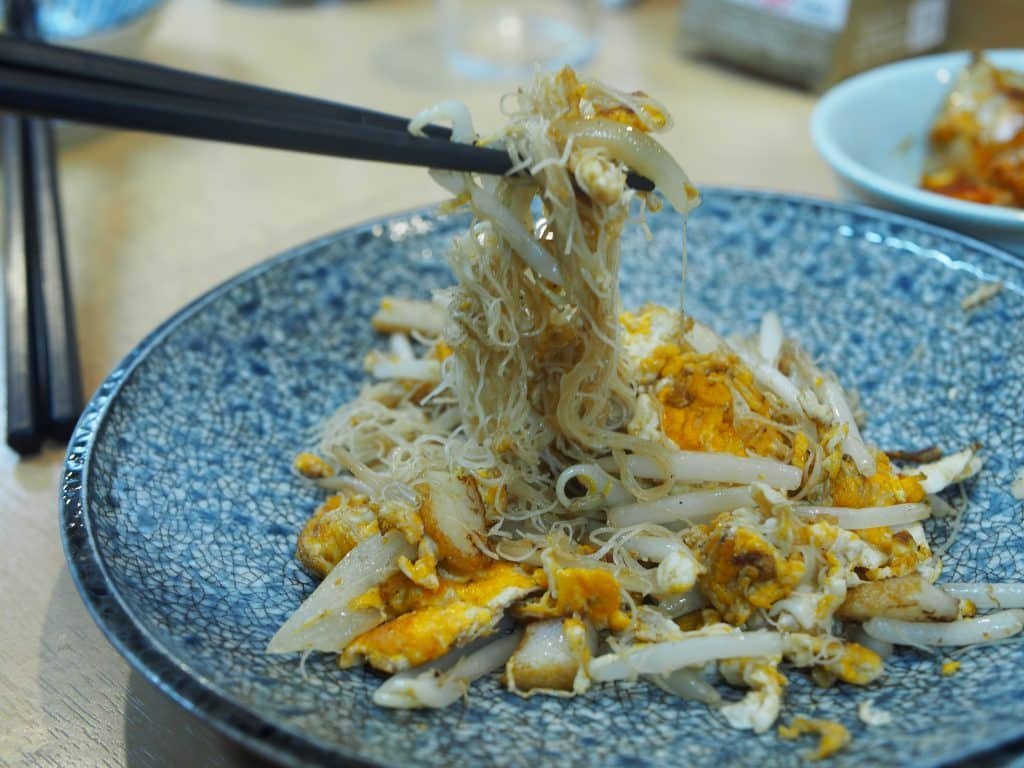
Ikanbiri
イカンビリー
800 Yen
A perfect dish to pair with alcohol, Han-chan highly recommends ‘ikanbiri.’ In Malaysian, ‘ikanbiri’ translates to small fish. ‘Ikan’ means fish, and ‘biri’ means small. This dish is a spicy stir fry featuring small sardines and onions. It’s highly addictive and easy to eat. Living in Japan, I’ve developed the habit of consuming fish daily, diverging from my meat-eating American roots. However, I believe even those who aren’t fond of fish would find it hard not to enjoy a little ‘ikanbiri.’
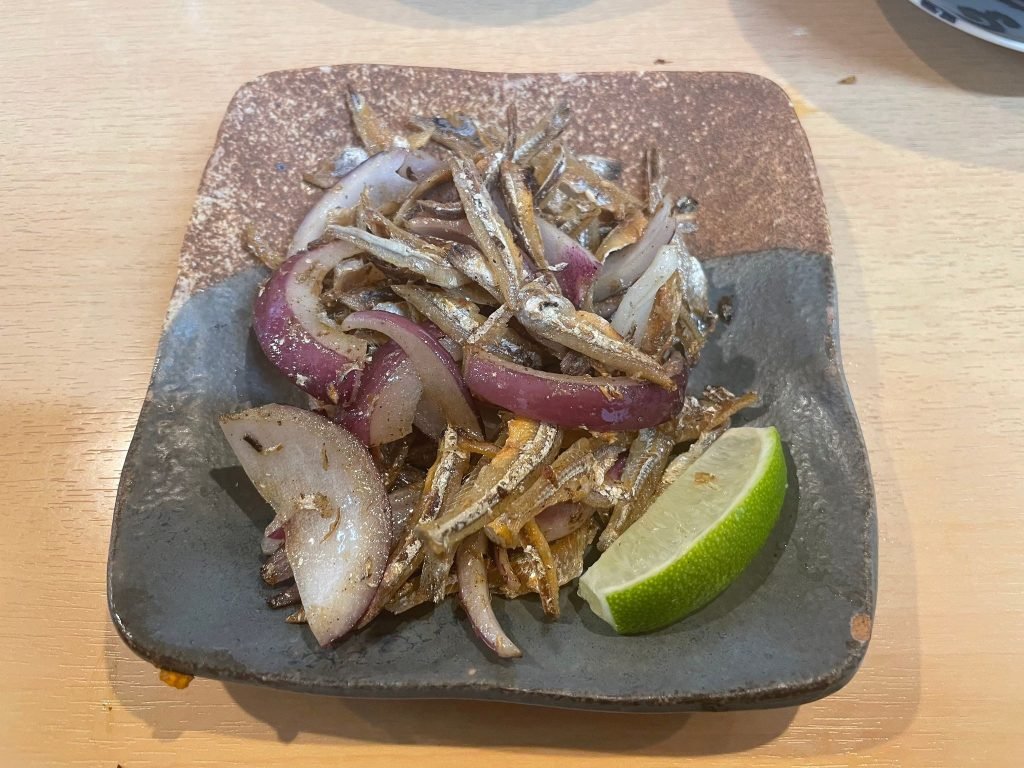
Conclusion
In the words of Han-chan, the accomplished Malaysian chef, “I don’t prepare my food for Japanese tastes. If I do that, it becomes Japanese food.” This resolute stance exemplifies his unwavering commitment to preserving the authenticity of his Malaysian culinary heritage. Formerly the tencho (shop manager) of Okamuro in Morinomiya, Hanchan leverages 17 years of culinary expertise at ‘Shintamon Sakakura’, a standing bar that stands apart from the conventional Japanese scene. Here, he shares the flavors of Malaysia, meticulously preserving their true essence amidst the culinary landscape of Osaka.
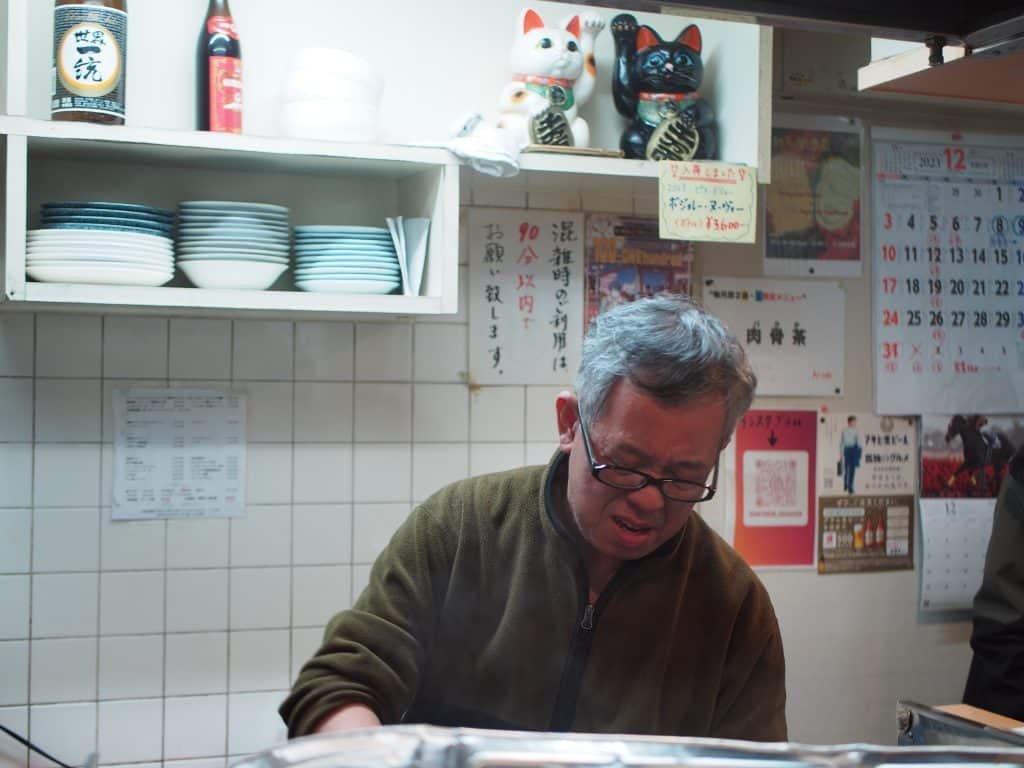
What we witness today in Ura Tenma, with its nomikai gatherings and the unique identity of standing bar ‘Shintamon Sakakura’, is not just a modern-day phenomenon but a continuation of a rich historical tradition that has withstood the test of time. The scene unfolding in Ura Tenma today is a living testament to the enduring appeal of standing bars, seamlessly merging the traditions of the past with the contemporary global and multicultural present.

























Good read! It’s good to learn of places that offer a cultural play on the old Tachi theme. Chao Kebab in Ebisucho is another example. They set up between two districts where kebab is well known, only the owner is Japanese and he named the place after his Taiwanese wife. She brings a special twist to dishes they serve there too! I beleive this aspect makes readers want to go try! Cheers. Wes